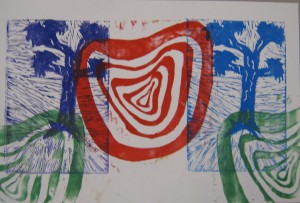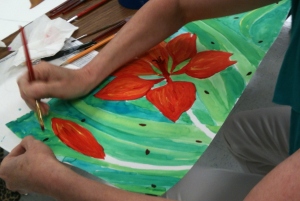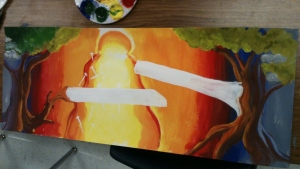Art and Science…Integrating and Opening Dialogue
Integrating art and science can easily be accomplished in both the art and science classroom.
Science is intrinsic to art, having brought the artist multiple kinds of media. Art has benefited science by providing the means of visually documenting and illustrating anatomies and systems from the tiny to colossal, and providing scientists a visual means of studying, arranging. and speculating.
Taking the steps to highlight the science concepts in art processes and media, art teachers help students recognize that art benefits from science. In turn, using art projects to visually demonstrate science concepts, students are actively participating in learning increasing their chances of retention.
Reflecting on the projects and concepts you cover each year, what relationships between science and art could you list?
Do you discuss these relationships with your students?
When you teach ceramics, do you talk to your students about the chemistry behind glazes and firing them? I know that my students are surprised to know that if they wanted to have a job creating new glazes they would have to have a deep understanding of minerals and chemistry to do so.
If you teach science, do you incorporate art as a means for students to visually demonstrate their understanding of concepts?
Have you ever considered approaching your campus art teacher to discuss possibilities?
Based on my own experiences in designing and implementing science/art integrated lessons, I came up with my list of some top benefits of implementing integrated lessons.
Using science concepts as the subject for visual art projects:
- adds variety and relevance to the visual art teachers’ subject inventory
- gives science teachers additional hands-on projects with tangible results that have personal meaning for students
- supports collaborative relationships between visual art and science teachers
- provides more learning opportunities for content that has scored low in assessments
- shows students that school subjects can be used to support one another
Highlighting science intrinsic to visual art projects:
- broadens your students’ base knowledge
- creates “aha!” moments when students experience science happening with their art
- supports collaborative relationships between visual art and science teachers
- provides more learning opportunities for content that has scored low in assessments
- helps students understand that school subjects share concept relationships
As the bank of art/science lessons and information grows, I invite viewers and educators to take part in creating a dialogue about their experiences. What lessons worked well for you? How have you tweaked lessons to fit your students needs? What did not work? Do you have lessons you would like to share or see available on this site?













